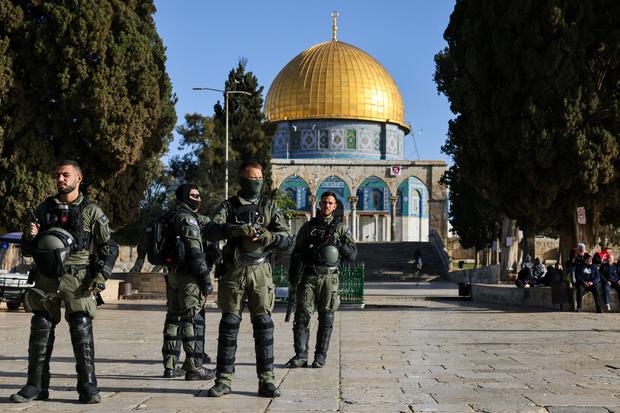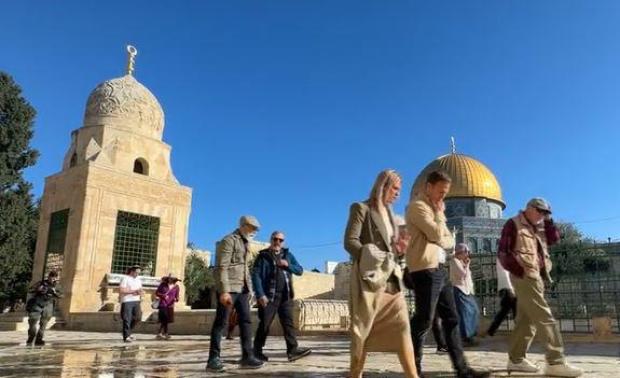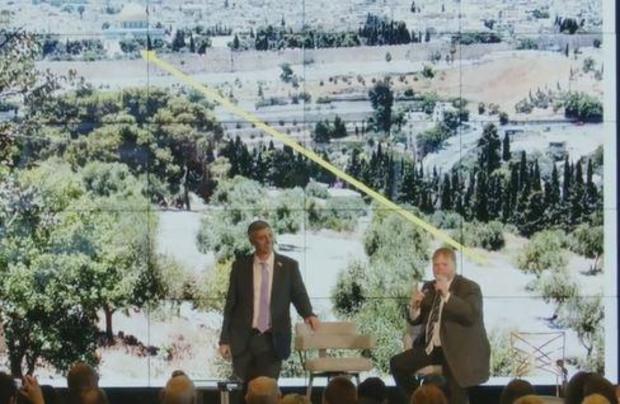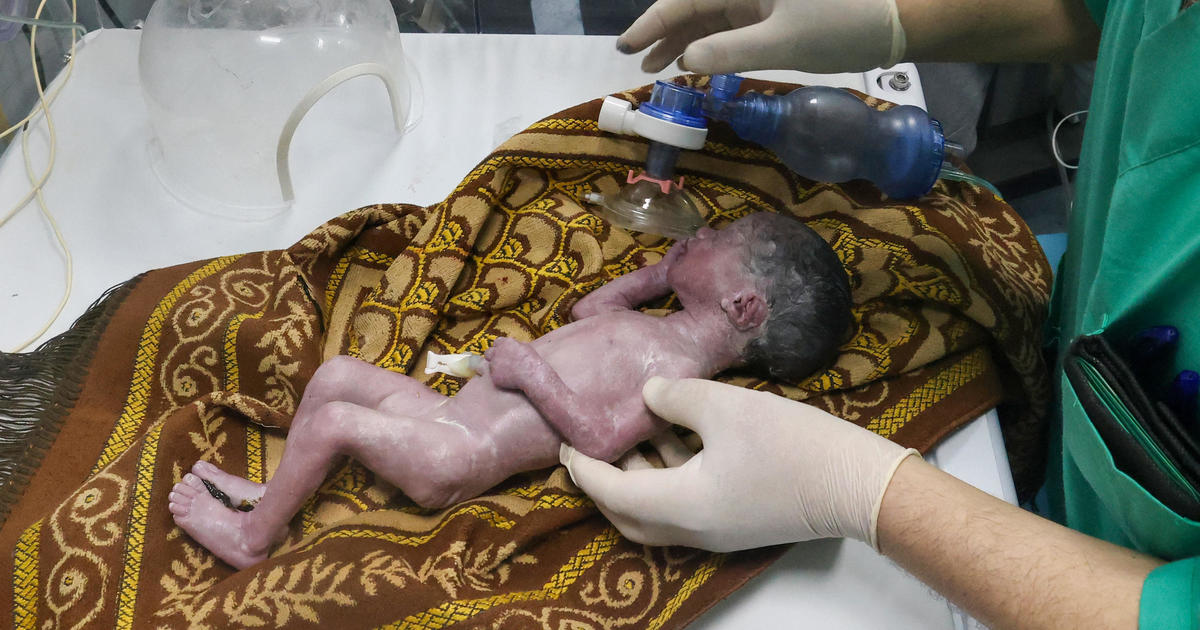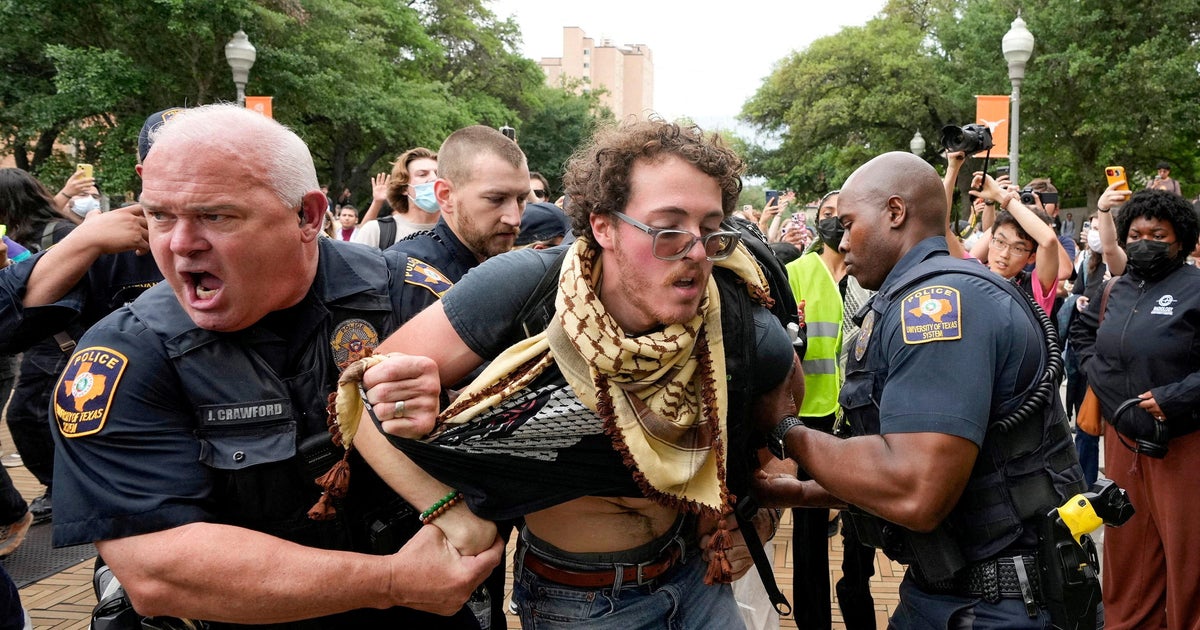What these red cows from Texas have to do with war and peace in the Middle East
Jerusalem — When Hamas spokesman Abu Ubaida began a speech marking the 100th day of the war in Gaza, one confounding yet eye-opening proclamation escaped the headlines. Listing the motives for the Palestinian militant group's Oct. 7 massacre in Israel, he accused Jews of "bringing red cows" to the Holy Land.
The cows he was talking about are red heifers, which now graze at a secure, undisclosed location in the Israeli-occupied West Bank. Some Jews and Christians believe they're key to rebuilding the Jewish temple that once stood in Jerusalem, and to beckoning the Messiah.
To understand, you have to look back almost 2,000 years in the tumultuous history of the Middle East, when the ancient Romans destroyed the last temple in Jerusalem.
To rebuild it, fervent believers point to the Bible's Book of Numbers, which commands the Israelites to offer "a red heifer without defect or blemish and that has never been under a yoke."
Only with that offering, they insist, can the temple rise again.
From Texas to the West Bank
Instrumental in bringing the heifers to the Holy Land was Yitshak Mamo, of Uvne Jerusalem, a group committed to seeing a new temple built in Jerusalem's Old City.
"You can check to see if they have any white or black hairs," he told CBS News, explaining that any hair that isn't red would disqualify the cows from fulfilling their prophesied role.
Finding the red heifers took years. The quest led Mamo not to Jewish breeders but to Christian ranchers thousands of miles away.
"After a long search, we found them in Texas," he said. "Texas red angus."
To bypass strict laws in place at the time that banned the export of U.S. cattle to Israel, the heifers were classified as pets, Mamo said with a laugh. But to those following biblical commandments, the cows are no laughing matter, he added, stressing that it was no publicity stunt.
"Harry Potter is a good story. The Bible is not a story," he said. "The Bible is a way of God to lead us."
But while they're classed as pets, there are no plans to let the red heifers live out long happy lives.
A massive white altar awaits, where they are to be burned on a plot of land overlooking the Mount of Olives in Jerusalem. Mamo said the ceremony must be performed looking directly into where the ancient Second Temple stood, until it was destroyed by the Romans in the year 70.
"A Pandora's box that nobody can close"
What Mamo didn't mention is what stands in the temple's place now: The Dome of the Rock and Al-Aqsa Mosque, which are among the holiest sites in Islam.
Today, heavily armed guards ensure that only Muslims are allowed inside the complex. But that hasn't stopped Jewish activists, like Melissa Jane Kronfeld, from leading groups up the Temple Mount five days every week.
"There's one true God, and it started here," she said, before falling to her knees and bowing where the First Temple, or the Temple of Solomon, was built in 957 BCE. The Second Temple, or Temple of Herod, was a reconstructed version of the first, built in the 6th century BCE, according to scripture.
"It's so important for the Jews to return and rebuild the temple," said New York native Kronfeld, who founded the High on the Har organization to lead the tours. "It's not about taking anything from our Muslim brothers and sisters. It's not about the destruction of Islamic holy sites. It's about preserving this place and being guardians over the house of God for all people."
But she makes no secret about what she wants to happen to the Dome of the Rock.
"I believe it's going to go, 100%. The whole thing is going to go to build a temple," she said, insisting that the shrine and its golden dome should be preserved, but relocated.
It's a suggestion that many fear, if acted upon, could make the current war even bloodier, and see it spread rapidly beyond the Gaza Strip.
"Everyone says that the building, the Third Temple, is what will bring the war, it would destabilize the Middle East," she said. "The Middle East seems pretty destabilized right now, and the war, if I'm not mistaken, is already here."
To be clear, Kronfeld's dream of seeing a Third Temple constructed on the site is just that, a dream, and it is not shared by the Israeli government or by the vast majority of Israelis or Jews. But the suggestion has been more than enough to incite numerous Islamist groups.
Hamas dubbed its Oct. 7 terror attack on Israel "the Al-Aqsa Wave," and the group's emblem features the Dome of the Rock behind two crossed swords.
While most Muslims do not support Hamas' violence, they do share its unwavering devotion to sacred ground, says Mustafa Abu Sway, the Imam Al-Ghazali Chair at the Al-Aqsa Mosque.
"Al-Aqsa Mosque belongs to all Muslims," he said. "So, you will find reactions from Indonesia to Toronto to New York. Today there are 2 billion Muslims worldwide."
He told CBS News that removing Al-Aqsa or the Dome of the Rock was "unimaginable," and warned that it would be "opening a Pandora's box that nobody can close."
U.S. evangelicals, the cows, and the second coming
Jewish activists have not been deterred by Hamas' Oct. 7 massacre or the ongoing war in Gaza. Some have been using the conflict as a backdrop to promote their cause in the United States.
At the recent National Gathering for Prayer and Repentance in Washington, D.C., Mamo spoke of his heifers and his hopes for a Third Jewish Temple. The gathering was convened by U.S. House Speaker Mike Johnson, who gave a keynote prayer before a who's-who of evangelical leaders and congresspeople spoke. Many American evangelicals believe the red heifers will usher the second coming of Christ.
"We're going to accept the Messiah, and we need the Messiah to come," Byron Stinson, a Texan who helped bring the cows to Israel, said at the gathering. "For me, the red heifer is red for the blood of Jesus Christ. That's why it's red."
Back at his settlement in the West Bank, Mamo told CBS News the heifers need only pass a final purity test. The ceremony that he hopes will resurrect the temple and usher in the Messiah could take place any day. He said he understands why Hamas could be outraged.
"But I cannot understand, even if they are right, why they have to slaughter and rape people to win their war," he said. "Terrorists have been attacking us before we ever dreamed of these cows," he reflects. "They don't need them as an excuse to kill."


